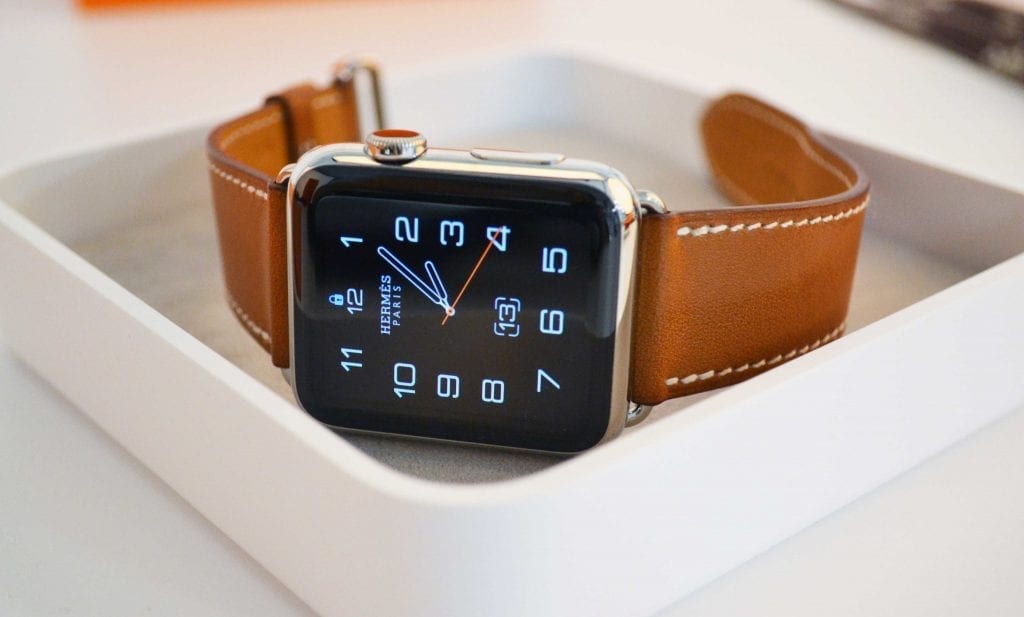
Apple sales beat estimates in the latest quarter, with all its main product segments showing growth – even the iPad and Apple Watch, which were previously struggling.
The US-based tech giant boosted net income by 12 per cent year-on-year to $8.72 billion on total sales of $45.41 billion.
But despite its global success the company still has major challenges in China, a market it once considered key to future growth. Greater China sales fell 9.5 per cent to $8 billion as locals switched allegiance to local brands, often with better specifications and lower price tags.
While iPhone sales have stagnated in the mainland, other product categories showed growth and sales were also higher in Taiwan.
“The decline from a market standpoint was concentrated in Hong Kong, which is a place that has been really affected by a reduction in tourism because the Hong Kong Dollar is pegged to the US dollar,” said Apple CFO Luca Maestri.
The strong global result was unexpected given the third quarter is traditionally Apple’s weakest due to its product launch cycle. The next generation iPhone, on track for a September launch, is expected to help Apple achieve fourth quarter sales of between $49 billion and $52 billion.
“Decidedly rosier”
GlobalData Retail MD Neil Saunders described the results as “decidedly rosier than those of recent quarters”.
“In our view, this is a very solid performance, especially so at this point in the cycle when consumers are awaiting the release of the next generation of product. All the main product segments are showing growth – however, it is clear that growth across the divisions is far from even. iPhone growth is respectable, but far from stellar. iPad growth is good but is still not strong. Mac growth is decent, but this is down to higher-priced laptops pushing up revenue rather than underlying volume growth in unit terms. In other words, sales of products are reasonable, but not spectacular.”
Saunders said the services sector – including products such as iTunes, Apple TV and the App Store – shows the strongest potential for Apple in the short term.
“In contrast, service sales powered ahead – with a growth rate of 22 per cent over the prior year. Services now represent around 16 per cent of Apple’s revenue base, up from 14 per cent a year ago. In our view, this growth has some way to run.”.
Saunders expects near-term benefits from iPads, the HomePod and the new iPhone.
“While the iPad remains a category past its prime, we believe the upcoming release of iOS 11 has the potential to stimulate some growth. In essence, Apple has come to realise that as aesthetically pleasing and as technologically sound as it is, the applications for the iPad are somewhat limited. This is exacerbated by the fact that the main benefit of an iPad, namely its larger screen, has been diminished by the rise of bigger smartphones. The new operating software goes some way to remedying this and gives the iPad many of the functions of a laptop or notebook; in so doing, it puts some clear blue water between it and the iPhone. This will allow Apple to compete more effectively with devices like Microsoft’s Surface and could sustain this quarter’s slight uptick in demand.”
Home Pod shines
Saunders said the HomePod comes “as a breath of fresh air” – if only because it is the first major new product release by Apple for some time.
“Despite this, we have mixed views about its potential success. There is no doubt that Apple has created a good piece of kit with superior speakers and some smart functions. However, the concept itself is not revolutionary; indeed, it is rather samey and follows a multitude of other home devices, including Amazon’s Echo products. One of the challenges here will be getting consumers who have already committed to one platform to switch to Apple or to buy into Apple as well. In our view, the HomePod is not sufficiently differentiated to do this well. As such, we do not believe the device will be the new iPhone; although it will likely be more successful than Apple Watch.”
A fundamental problem for Apple is that it has set the bar so high, he said. “Its existing products are impressive and often cutting edge. However, consumers are now intimately familiar with them and, take them for granted.
As such, it is tough to wow them with small changes and tweaks – no matter how much engineering and technical prowess those adaptations require.
“That said, Apple has been in an incremental mode for quite some time. Our sense is that the company has lost the edge for looking at a part of the market or a category and finding ways in which it can radically reinvent it – just as it once did with the iPod and then the iPhone. This is the fuel that previously made Apple great; without adding more of it to the fire, Apple’s flame – dazzling though it is – will not burn brighter.”

